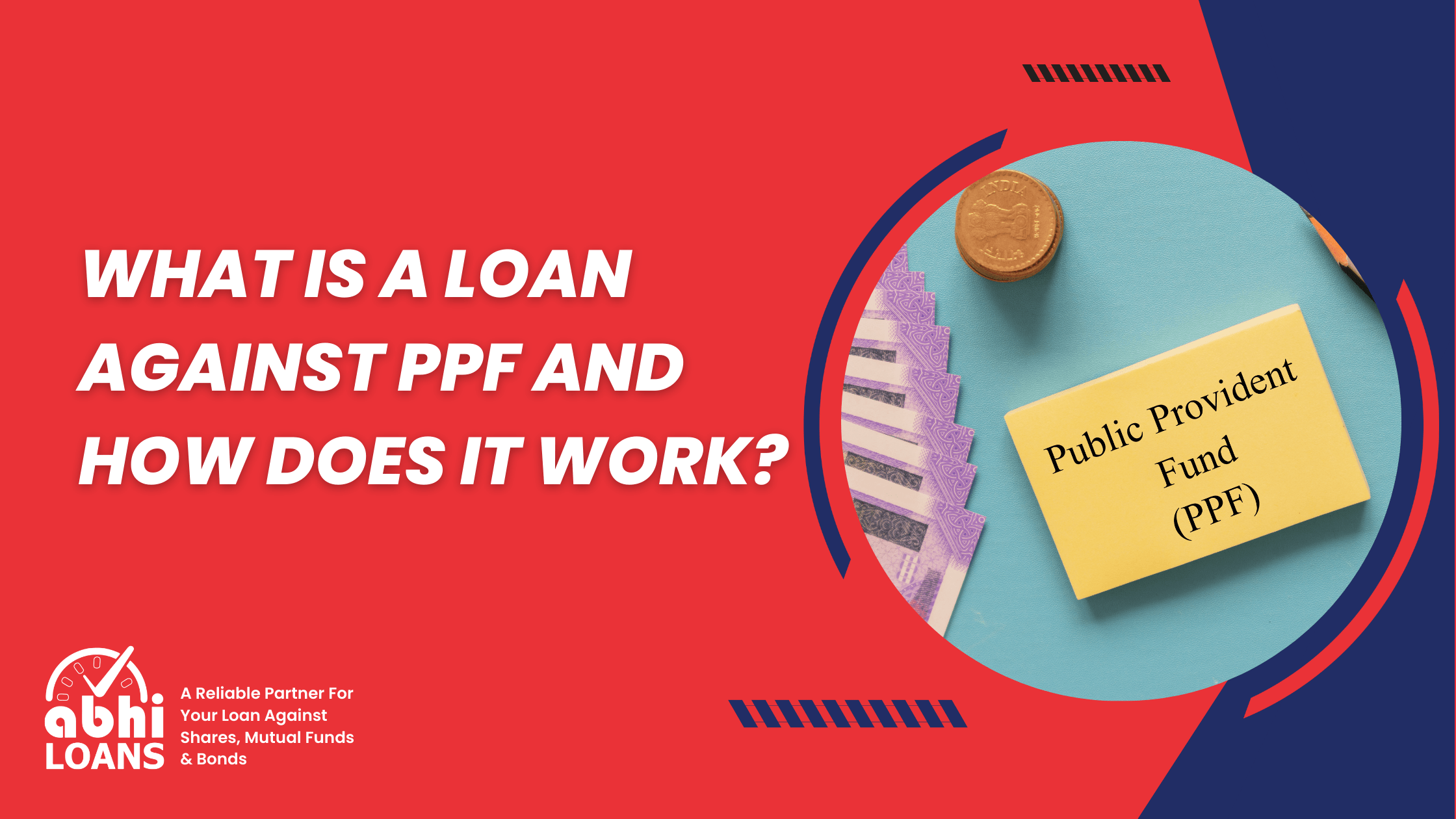What Is a Loan Against PPF and How Does It Work?
The Public Provident Fund (PPF) stands out as a preferred choice for long-term savings among Indian investors. Backed by the Government of India, it offers a secure and tax-efficient way to build a financial cushion for the future.
While the primary goal of a PPF account is long-term savings, many people are unaware that it can also be used as collateral for borrowing funds in the short term. Yes, you can take out a loan against a PPF account. If you’re wondering, “Can we take a loan against PPF?” the answer is yes, but there are conditions and limits set by the government.
In this article, we’ll explain everything you need to know about loan against PPF, including its features, eligibility, loan against PPF interest rate, repayment rules, and how much loan you can take against your PPF account.
What is a Loan Against PPF?
A loan against PPF allows the PPF account holder to borrow money from their own PPF balance. This feature provides a short-term loan facility without approaching a bank or financial institution.
The government allows this to help investors meet urgent financial needs without disrupting their long-term savings goals. This loan is not like a typical personal loan offered by a bank. Instead, it’s a temporary withdrawal from your PPF corpus under specific rules and within a limited time frame.
Can We Take Loan Against PPF?
Yes, you can take a loan against PPF account, but only under certain conditions:
- Timing: The loan facility is available between the 3rd to 6th financial years, starting from the date the PPF account is opened. For example, if you opened a PPF account in April 2020, you can avail a loan from April 2022 to March 2026.
- One Loan at a Time: You can take only one loan at a time against your PPF account. A second loan can be taken only after the first loan is fully repaid.
- Account Ownership: Only the PPF account holder is eligible to avail of the loan; nominees are not allowed to apply.
How Much Can You Borrow Against a PPF Account?
One of the most common queries is how much loan can be taken against the PPF account. As per the rules set by the Ministry of Finance:
- You can borrow up to 25% of the balance in your PPF account as it stood at the end of the second financial year immediately before the year in which you apply for the loan.
Let’s understand this with an example:
- Suppose you opened a PPF account in April 2020.
- You wish to take a loan in the financial year 2024-25.
- The balance at the end of FY 2022-23 (which is two years before 2024-25) is ₹2,00,000.
- Then, the maximum loan amount you can avail of will be 25% of ₹2,00,000, i.e., ₹50,000.
This means you cannot borrow more than the permissible percentage, regardless of how much you have contributed after that date.
Loan Against PPF Interest Rate
The loan against PPF interest rate is relatively low compared to personal loans offered by banks and NBFCs. This makes it an attractive choice for short-term financial requirements.
- The loan carries an interest rate that is 1% higher than the current PPF interest rate. For instance, if the prevailing PPF rate is 7.5%, the loan interest rate would be 8.5%.
- However, the interest rate is subject to change based on government guidelines.
It’s important to note that interest is not charged on a compound basis, which makes the repayment affordable.
Repayment Terms and Conditions
Repaying a loan against PPF comes with its own set of rules:
- Principal Repayment: The principal loan amount must be fully repaid within 36 months from the date it is disbursed.
- Interest Repayment: After the principal is repaid, interest must be repaid in two monthly installments or as a lump sum.
- Prepayment Option: You can repay the loan before the 36-month term, which helps reduce the overall interest burden.
- Penalty on Default: If the loan is not repaid within 36 months, the interest rate will increase to 6% above the prevailing PPF interest rate. This penalty is quite steep and acts as a deterrent for defaults.
Benefits of Taking a Loan Against PPF
There are several advantages to availing a loan against a PPF account, such as:
- No need for credit checks: Since you are borrowing from your investment, your credit score doesn’t matter.
- Lower interest rates: Compared to unsecured personal loans, the interest rates are quite low.
- No documentation hassle: The process is simple and requires minimal paperwork.
- No impact on long-term savings: The money remains in the account and continues to earn interest on the remaining balance.
Limitations and Things to Keep in Mind
While a loan against PPF offers many benefits, there are a few limitations:
- Limited availability window: This facility is accessible only between the 3rd to 6th financial years.
- Restricted amount: You can borrow only 25% of the balance, which may not be sufficient for large expenses.
- No second loan before repayment: You must clear the existing loan to apply for another.
Also, this facility becomes void once partial withdrawals are allowed (after the 6th financial year). At that stage, you can make partial withdrawals instead of taking a loan.
How to Apply for a Loan Against PPF?
Applying for a loan against your PPF account is a simple and hassle-free process:
- Visit the bank or post office branch where your PPF account is held.
- Submit Form D (loan application form) with details like account number, loan amount required, and a declaration.
- The bank or post office will process your application, and once approved, the loan amount will be credited to your linked account.
In recent years, some banks have also enabled online applications for loans against PPF, especially if the PPF account is linked with net banking.
Alternatives to a Loan Against PPF
If you’re not eligible for a loan against PPF or need more funds than allowed, here are some alternatives:
- Loan against Fixed Deposits: You can pledge your FD and borrow up to 90% of its value.
- Loan against Mutual Funds or Shares: You can pledge your investments for a short-term loan at competitive interest rates.
- Personal Loan: If you need a larger amount and have a good credit score, personal loans are a quick option.
- Partial Withdrawal from PPF: After the 6th year, partial withdrawals are allowed, but only within specific limits and once a year.
Conclusion
A loan against PPF is a smart way to access funds during a financial crunch without breaking your long-term investment. It offers a low-interest alternative to personal loans and doesn’t require any credit score validation. However, it comes with its own set of conditions—a limited borrowing window, repayment tenure, and a cap on the amount you can borrow.
So, if you’re in your 3rd to 6th year of holding a PPF account and need short-term liquidity, this facility can be a great help. Just ensure you borrow responsibly and repay the amount within the given time to avoid penalties.
Frequently Asked Questions (FAQs)
Q. Is a loan against PPF taxable?
No, the loan amount is not taxable as it is not considered income.
Q. Can NRIs take a loan against PPF?
No, NRIs cannot open or operate a PPF account, so they are not eligible for this loan facility.
Q. What happens if the loan is not repaid?
If not repaid within 36 months, the interest rate increases to 6% more than the PPF rate, and the amount is deducted from your PPF balance.

